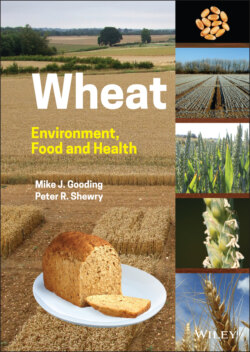Читать книгу Wheat - Peter R. Shewry - Страница 31
1.4 Wheat as Food
ОглавлениеAlthough wheat still accounts for half of the total intake of calories in some countries, the contribution to nutrition in Europe in historical times was even greater. For example, the cost of bread was estimated to account for between a third and two thirds of the total budgets of working families (as opposed to landowners and gentry) in the UK in the period between 1760 and 1836, with the highest estimate being almost 90% for one labourer's family (Peterson 1995). Apparently, therefore, the coarse bread that was consumed at the time was able to meet most of the nutritional requirements of adults engaged in physical work.
The wider contributions of wheat and bread to health are often ignored, with both being widely regarded as little more than a source of energy. In fact, even in modern Europe wheat, and particularly bread, still provide surprisingly high contributions of a range of essential nutrients. For example, although bread only contributes 10–13% (depending on age and gender) of the daily intake of energy in the UK, it also contributes 10–12% of the daily intake of protein and between 10 and 20% of the daily intakes of minerals (iron, zinc, copper, magnesium, selenium, and calcium) and B vitamins (B1 thiamine, B3 niacin, B9 folate). More importantly, it is also a major source of dietary fibre, contributing about 20% of the daily intake (Bates et al. 2014a, b). These contributions are higher in Poland, with bread providing 21.9% of energy, 16.5% of protein, 35.4% of fibre, 24.9% of iron, and 20.7% of folate (vitamin B9) (Laskowski et al. 2019). The wide consumption and low price of bread therefore make it an excellent vehicle for delivering improved nutrition to large populations at low cost.
The nutritional and health impacts of wheat are discussed in detail in Chapter 9, with the following sections focusing on more practical aspects of the processing of wheat for food, particularly bread.
